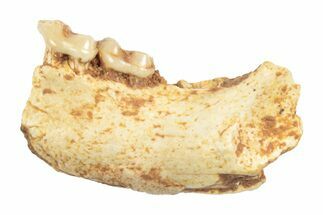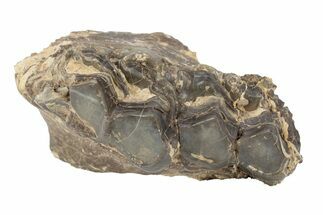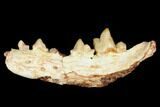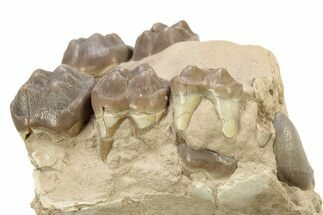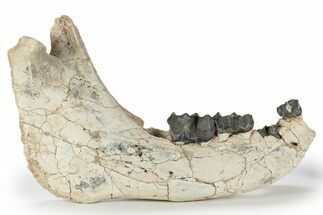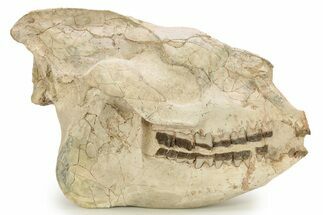This Specimen has been sold.
1.95" Fossil Bear Dog (Cynodictis) Jaw Section - Occitanie, France
This is a premium 1.95" wide jaw section of a bear dog (Cynodictis). The specimen contains five teeth, the largest of which is .4" wide. There appears to be a repaired crack through the jaw, but little other restoration work was done to the specimen.
Cynodictis was a small transitional species of carnivore that paved the way for modern caniforms. It is believed that these "bear dogs" were relatively small and ate more smaller prey, like lizards and rodents, than other later species. In that regard, a more appropriate name is the "marten-dog," which is much closer to the translation of the name. This was because in the early Priabonian era (~38-34 million years ago), the dominant predators were predominantly large creodonts like Hyaenodon.
The Quercy Phosphorites Formation in France is world famous for its Eocene to Miocene faunas, especially those from the upper Eocene to lower Oligocene. The latter particularly helped to understand the ‘Grande Coupure’, a dramatic faunal turnover event that occurred in Europe during the Eocene-Oligocene transition. Fossils from the Quercy Phosphorites were excavated during the mid-19th century until the early 20th century from a series of sites that are no longer accessible. These fossils have subsequently dispersed between several research institutions, unfortunately losing some temporal and geographical information in the process. This material is part of an old collection we acquired that presumably was collected along with this material in the 19th or early 20th century. A recently published paper on the mammals of the Quercy Phosphorites can be found below.
The upper Eocene-Oligocene carnivorous mammals from the Quercy Phosphorites (France) housed in Belgian collections
The upper Eocene-Oligocene carnivorous mammals from the Quercy Phosphorites (France) housed in Belgian collections
SPECIES
Cynodicitis sp.
LOCATION
Occitanie, France
FORMATION
Quercy Phosphorites Formation
SIZE
1.95" wide
ITEM
#181281
We guarantee the authenticity of all of our specimens.
 Reviews
Reviews


